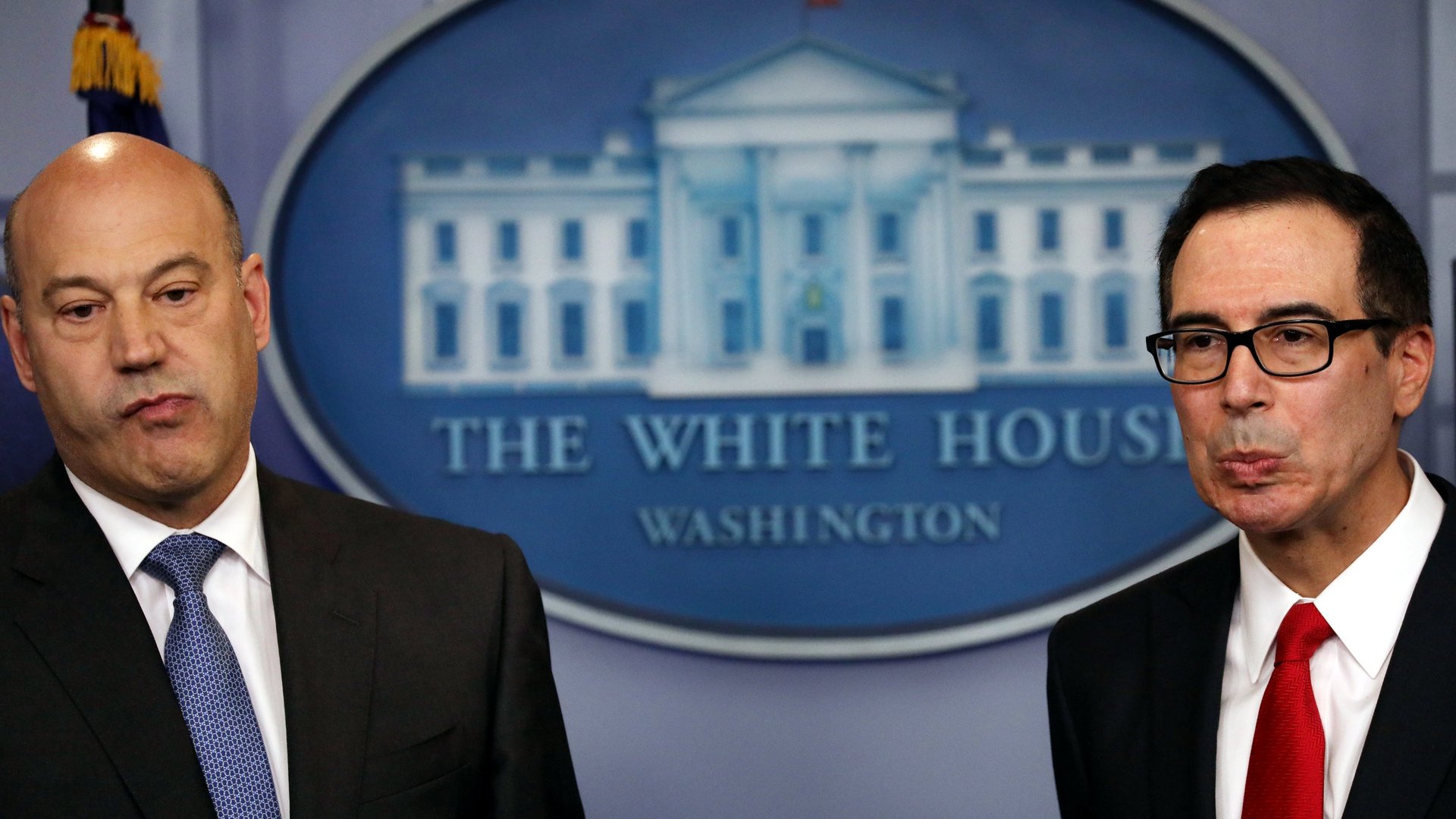Donald Trump’s tax plan isn’t going to be a $4,000 windfall for American households
The biggest political problem with Donald Trump’s plan to dramatically cut corporate taxes is that most of the benefits will accrue to the wealthiest Americans while the costs are, well, ignored.


The biggest political problem with Donald Trump’s plan to dramatically cut corporate taxes is that most of the benefits will accrue to the wealthiest Americans while the costs are, well, ignored.
To fight that impression, the White House Council of Economic Advisers issued a new report (pdf) today (Oct. 16) arguing that cuts to taxes on big business will generate huge increases in wages for every American. There’s enough to provide an increase in average annual income of $4,000 to $9,000, the council said, “once the changes have been fully absorbed by the economy.”
This claim depends on quite a few controversial assumptions.
The biggest debate is theoretical: How much do corporate tax rates fall on shareholders who own the company (coming out of profits) and how much do they fall on workers (in the form of lower wages)?
It depends on who pays the taxes
In their new paper, Trump’s advisers cite several estimates suggesting that more than half the corporate-tax burden falls on workers, with some estimates as high as 75%. One reason these estimates are so high is that they consider the effects of US corporations doing business all over the world and keeping at least $1.8 trillion of earnings overseas, untaxed. In this argument, corporations pay their income taxes at home by cutting wages while stockholders enjoy the gains.
However, there’s reason to believe that this estimate is overstated. Earlier this fall, the Treasury Department suddenly removed a 2012 study (paywall) from its website that found that just 18% of the corporate tax fell on workers. The study was put together by a group of civil-service employees in the department’s tax-analysis office, and is similar to the 25% figure used by the Joint Committee on Taxation when estimating the effects of tax changes.
The Treasury analysts, too, found that the movement of money around the world plays a big role in these estimates. But they rely on a different model that tempers the idea that globalization has totally displaced the American worker. They argue that America’s imported goods and services are not perfect substitutes for their domestic equivalents, and thus corporations cannot escape the tax burden by driving down wages. This argument makes more sense in a US economy that, at peak globalization, still creates jobs, despite worries about weakening overall participation in the labor market. They also considered that a large share of US corporate profits come from monopolies and rents, which means taxing them won’t effect investment behavior.
“The study we put out today provided a range of estimates for the income effects for workers,” a CEA spokesperson told Quartz when asked about the estimates. “One of those papers that CEA relied on (the one corresponding to $9,000 in additional income, the high end of the income range) also simultaneously estimates the increase in income for owners of capital coming from a corporate rate reduction. When they do that, they report the labor share of the corporate tax burden at 57%. A $4,000 conservative estimate of worker wage increases would imply a labor share of the corporate tax burden far lower than that. That is one of the reasons we think this is a conservative income estimate for households.”
Repatriating cash hasn’t created jobs
However you come down on the amount of corporate taxes that workers pay, the reality is that a big cut isn’t enough to really effect their income. Consider that in 2015, US corporations paid $343 billion in income tax. Let’s say that was reduced by 42%, equal to the move from a 35% to 20% statutory rate proposed by Trump’s team. Even if all that savings was just divided among the 125 million American households, there would only be an extra $1,000 per family. So where is the extra $3,000 in income promised by the White House’s report?
It depends on the tax cut creating a massive increase in growth and corporate investment in the US, drawn not just from the tax cut itself, but from the hundreds of billions of dollars companies would hypothetically repatriate from overseas. In the eyes of the Trump White House, this investment would dramatically increase demand for labor in the US, driving up wages. Don’t count on it. In 2004, the Bush administration offered a tax holiday to multinational corporations so they could bring home overseas cash; the top 15 firms brought back $150 billion—and laid off 21,000 workers.
Unfortunately, it’s hard to model whether companies freed up by tax cuts would invest in the US or in their operations abroad. Even if they do invest in the US, it’s not clear that will necessarily drive up demand for labor; indeed, much “overseas cash” is already invested in US securities. The other problem is forecasting what will happen if, as expected, these tax cuts are paid for by borrowing, which implies future tax increases, higher interest payments or cuts to public spending. Disingenuously, the CEA report also cites two independent analyses of corporate-tax reform that found large increases in domestic income–but those analyses looked at a total overhaul paid for with a border-adjustment tax that Republicans have since abandoned.
Of course, all of this talk is academic—pun intended—until there’s an actual legislation in front of Congress. So far, for all Trump’s Twitter exhortations to pass a tax-reform bill, such a bill does not exist.